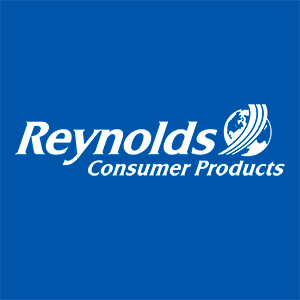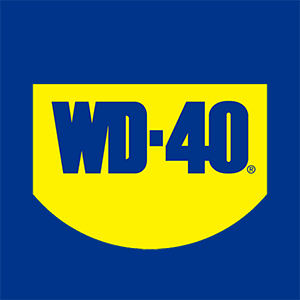
Spectrum Brands (SPB)
Spectrum Brands is in for a bumpy ride. Its low returns on capital and plummeting sales suggest it struggles to generate demand and profits, a red flag.― StockStory Analyst Team
1. News
2. Summary
Why We Think Spectrum Brands Will Underperform
A leader in multiple consumer product categories, Spectrum Brands (NYSE:SPB) is a diversified company with a portfolio of trusted brands spanning home appliances, garden care, personal care, and pet care.
- Sales tumbled by 3.6% annually over the last three years, showing consumer trends are working against its favor
- Organic sales performance over the past two years indicates the company may need to make strategic adjustments or rely on M&A to catalyze faster growth
- Underwhelming 0.9% return on capital reflects management’s difficulties in finding profitable growth opportunities


Spectrum Brands’s quality isn’t great. There are more promising alternatives.
Why There Are Better Opportunities Than Spectrum Brands
High Quality
Investable
Underperform
Why There Are Better Opportunities Than Spectrum Brands
At $58.55 per share, Spectrum Brands trades at 13x forward P/E. Spectrum Brands’s valuation may seem like a bargain, especially when stacked up against other consumer staples companies. We remind you that you often get what you pay for, though.
Our advice is to pay up for elite businesses whose advantages are tailwinds to earnings growth. Don’t get sucked into lower-quality businesses just because they seem like bargains. These mediocre businesses often never achieve a higher multiple as hoped, a phenomenon known as a “value trap”.
3. Spectrum Brands (SPB) Research Report: Q3 CY2025 Update
Household products company Spectrum Brands (NYSE:SPB) fell short of the markets revenue expectations in Q3 CY2025, with sales falling 5.2% year on year to $733.5 million. Its non-GAAP profit of $2.61 per share was significantly above analysts’ consensus estimates.
Spectrum Brands (SPB) Q3 CY2025 Highlights:
- Revenue: $733.5 million vs analyst estimates of $741.3 million (5.2% year-on-year decline, 1.1% miss)
- Adjusted EPS: $2.61 vs analyst estimates of $0.91 (significant beat to due to tax benefit)
- Adjusted EBITDA: $63.4 million vs analyst estimates of $63.88 million (8.6% margin, 0.7% miss)
- Operating Margin: 4%, up from 2.8% in the same quarter last year
- Free Cash Flow Margin: 21.5%, up from 8.8% in the same quarter last year
- Organic Revenue fell 6.6% year on year vs analyst estimates of 5.2% declines (144.8 basis point miss)
- Market Capitalization: $1.29 billion
Company Overview
A leader in multiple consumer product categories, Spectrum Brands (NYSE:SPB) is a diversified company with a portfolio of trusted brands spanning home appliances, garden care, personal care, and pet care.
The company’s history traces back to the early 20th century when it was originally founded as the "U.S. Electrical Manufacturing Company" in 1906, playing a key role in the development of the first electrically lit Christmas tree lights. In 1955, it changed its name to Rayovac Corporation and merged with Spectrum Brands in 2005 to form the company we know today.
Spectrum Brands’s portfolio was largely built up via acquisitions and now includes household names such as Black + Decker in home appliances, Spectracide in lawn and garden care, Nature's Miracle in pet care, and Remington in personal care. The company continues to be quite acquisitive and seeks to buy complementary brands, allowing it to enter new markets, benefit from synergies, and adapt to changing consumer preferences.
Spectrum Brands has a global footprint and its products are available in North America, Europe, Latin America, and other select markets, making it a significant player in the global consumer goods industry. It sells its products through various channels, including e-commerce and retail partnerships with companies like Best Buy and The Home Depot.
4. Household Products
Household products stocks are generally stable investments, as many of the industry's products are essential for a comfortable and functional living space. Recently, there's been a growing emphasis on eco-friendly and sustainable offerings, reflecting the evolving consumer preferences for environmentally conscious options. These trends can be double-edged swords that benefit companies who innovate quickly to take advantage of them and hurt companies that don't invest enough to meet consumers where they want to be with regards to trends.
Competitors include General Electric (NYSE:GE) in home appliances, Central Garden & Pet (NASDAQ:CENT) in pet care, Scotts Miracle-Gro (NYSE:SMG) in lawn and garden care, and Procter & Gamble (NYSE:PG) in personal care.
5. Revenue Growth
Examining a company’s long-term performance can provide clues about its quality. Any business can have short-term success, but a top-tier one grows for years.
With $2.81 billion in revenue over the past 12 months, Spectrum Brands carries some recognizable products but is a mid-sized consumer staples company. Its size could bring disadvantages compared to larger competitors benefiting from better brand awareness and economies of scale.
As you can see below, Spectrum Brands’s revenue declined by 3.6% per year over the last three years, a tough starting point for our analysis.
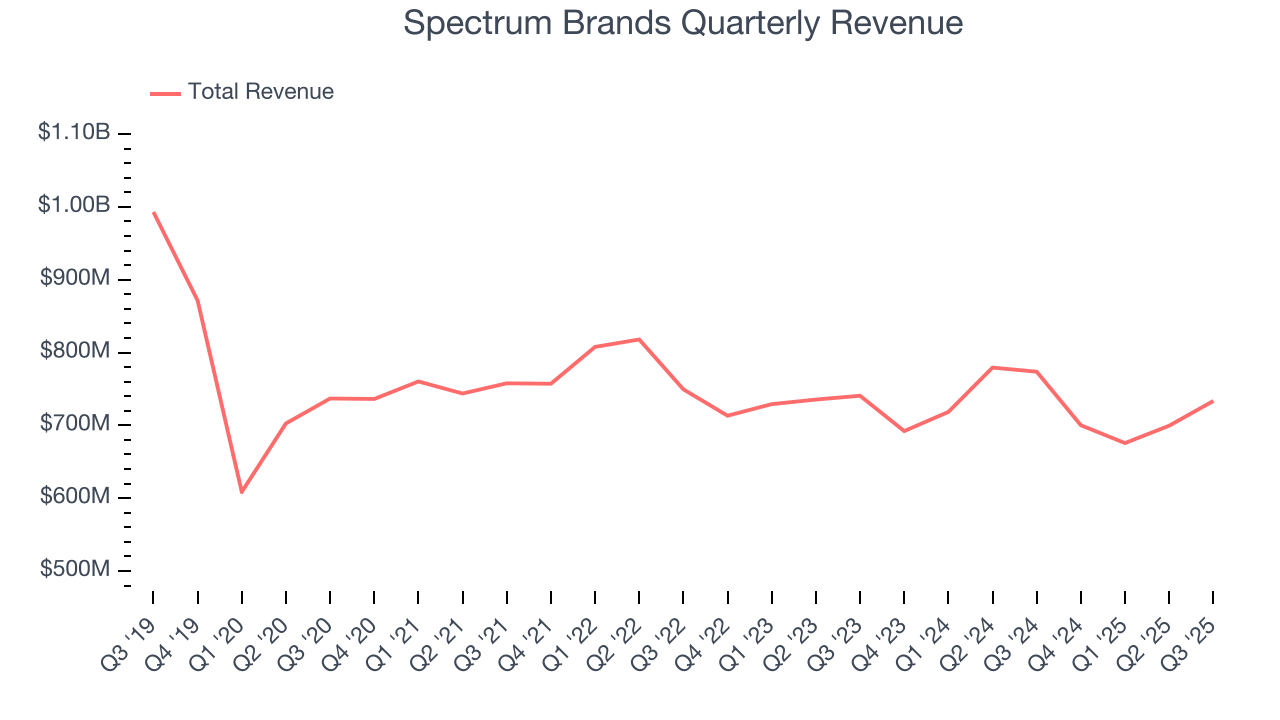
This quarter, Spectrum Brands missed Wall Street’s estimates and reported a rather uninspiring 5.2% year-on-year revenue decline, generating $733.5 million of revenue.
Looking ahead, sell-side analysts expect revenue to remain flat over the next 12 months. Although this projection indicates its newer products will fuel better top-line performance, it is still below average for the sector.
6. Organic Revenue Growth
When analyzing revenue growth, we care most about organic revenue growth. This metric captures a business’s performance excluding one-time events such as mergers, acquisitions, and divestitures as well as foreign currency fluctuations.
Spectrum Brands’s demand has been falling over the last eight quarters, and on average, its organic sales have declined by 1.8% year on year. 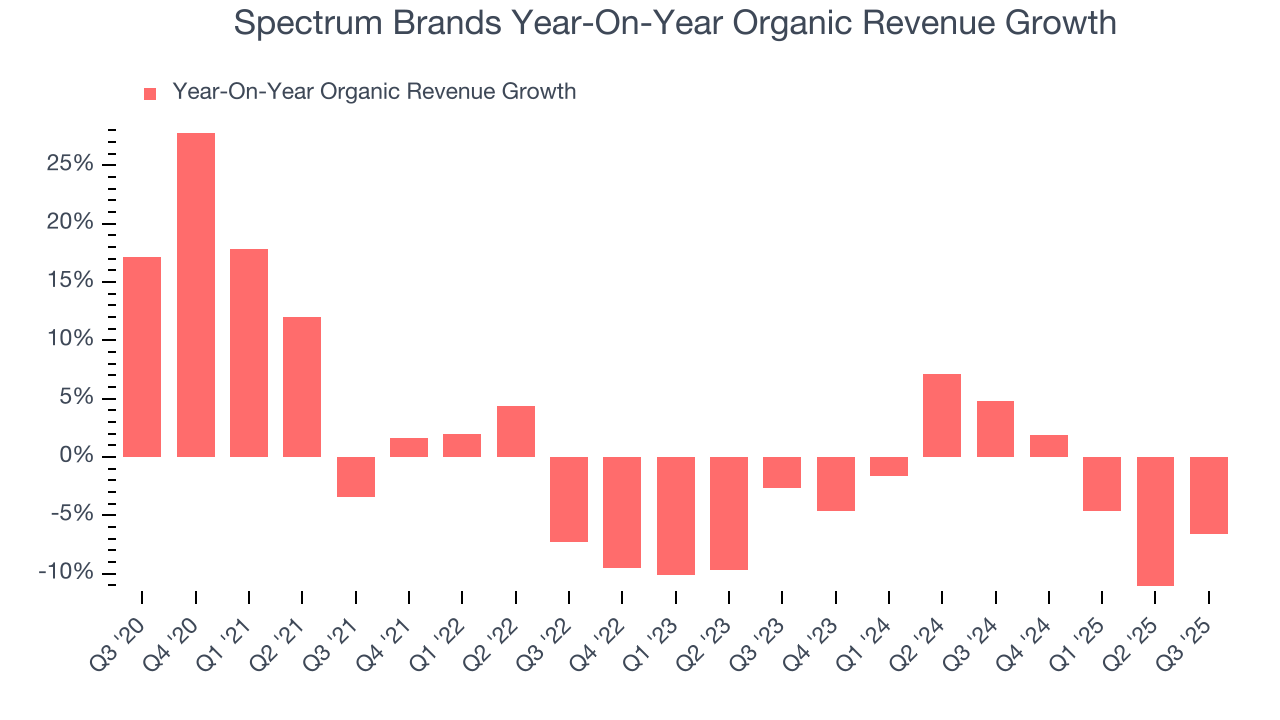
In the latest quarter, Spectrum Brands’s organic sales fell by 6.6% year on year. This decrease represents a further deceleration from its historical levels. We hope the business can get back on track.
7. Gross Margin & Pricing Power
All else equal, we prefer higher gross margins because they usually indicate that a company sells more differentiated products, has a stronger brand, and commands pricing power.
Spectrum Brands has good unit economics for a consumer staples company, giving it the opportunity to invest in areas such as marketing and talent to stay competitive. As you can see below, it averaged an impressive 37.1% gross margin over the last two years. That means for every $100 in revenue, $62.91 went towards paying for raw materials, production of goods, transportation, and distribution. 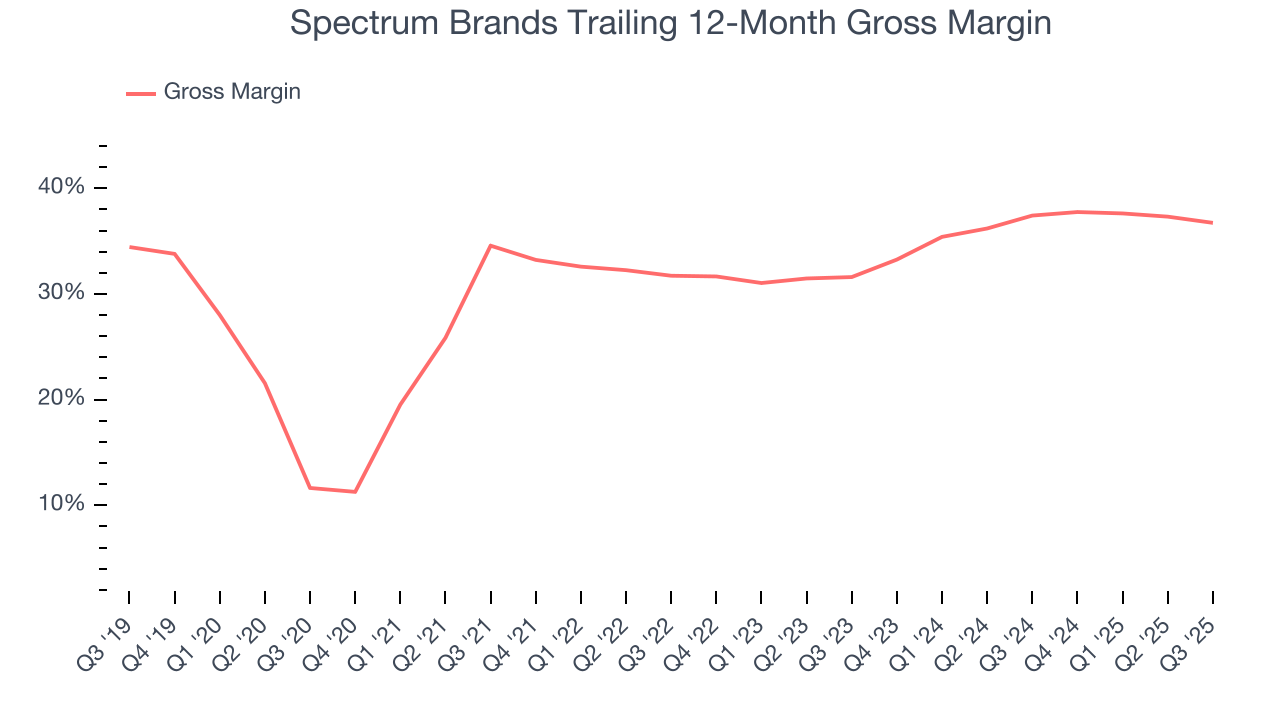
Spectrum Brands produced a 35% gross profit margin in Q3, marking a 2.3 percentage point decrease from 37.2% in the same quarter last year. Zooming out, the company’s full-year margin has remained steady over the past 12 months, suggesting its input costs (such as raw materials and manufacturing expenses) have been stable and it isn’t under pressure to lower prices.
8. Operating Margin
Operating margin is a key profitability metric because it accounts for all expenses enabling a business to operate smoothly, including marketing and advertising, IT systems, wages, and other administrative costs.
Spectrum Brands was profitable over the last two years but held back by its large cost base. Its average operating margin of 5.1% was weak for a consumer staples business. This result is surprising given its high gross margin as a starting point.
Analyzing the trend in its profitability, Spectrum Brands’s operating margin decreased by 1.3 percentage points over the last year. Spectrum Brands’s performance was poor no matter how you look at it - it shows that costs were rising and it couldn’t pass them onto its customers.

In Q3, Spectrum Brands generated an operating margin profit margin of 4%, up 1.2 percentage points year on year. The increase was encouraging, and because its revenue and gross margin actually decreased, we can assume it was more efficient because it trimmed its operating expenses like marketing, and administrative overhead.
9. Earnings Per Share
We track the change in earnings per share (EPS) for the same reason as long-term revenue growth. Compared to revenue, however, EPS highlights whether a company’s growth is profitable.
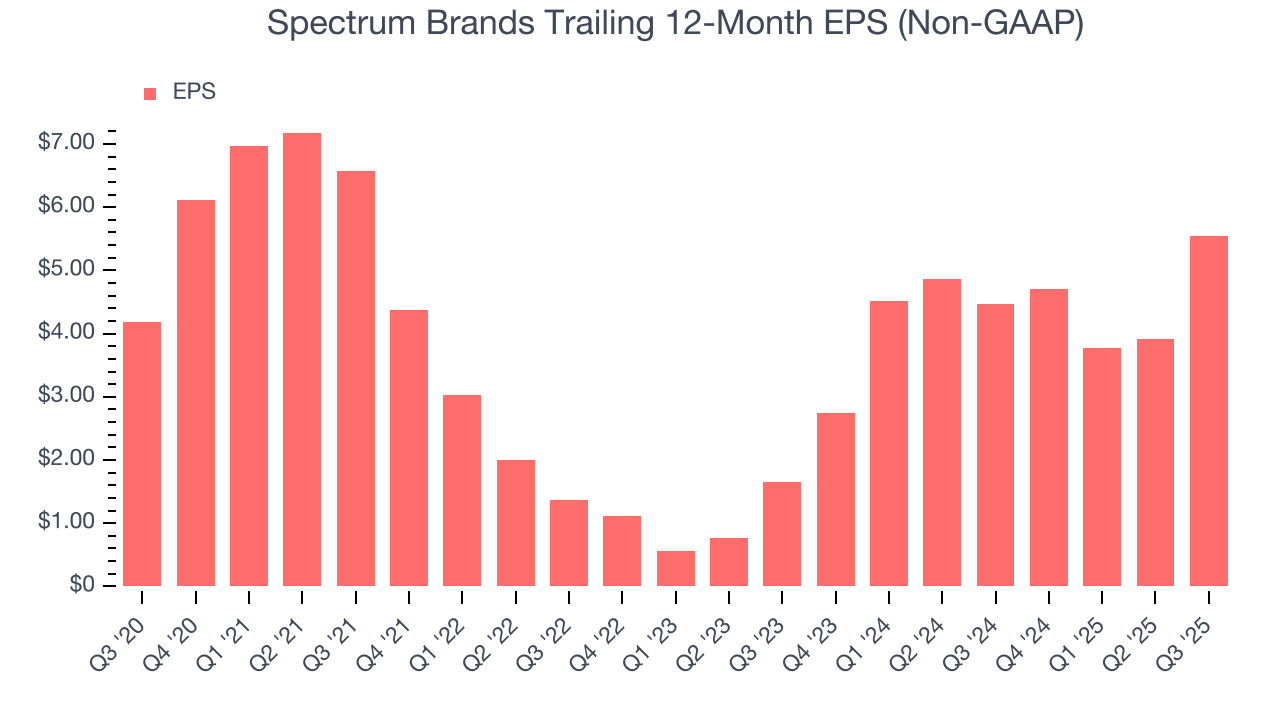
In Q3, Spectrum Brands reported adjusted EPS of $2.61, up from $0.97 in the same quarter last year. This print easily cleared analysts’ estimates, and shareholders should be content with the results. Over the next 12 months, Wall Street expects Spectrum Brands’s full-year EPS of $5.55 to shrink by 30%.
10. Cash Is King
Free cash flow isn't a prominently featured metric in company financials and earnings releases, but we think it's telling because it accounts for all operating and capital expenses, making it tough to manipulate. Cash is king.
Spectrum Brands has shown mediocre cash profitability over the last two years, giving the company limited opportunities to return capital to shareholders. Its free cash flow margin averaged 4.9%, subpar for a consumer staples business.
Taking a step back, an encouraging sign is that Spectrum Brands’s margin expanded by 1.9 percentage points over the last year. The company’s improvement shows it’s heading in the right direction, and we can see it became a less capital-intensive business because its free cash flow profitability rose while its operating profitability fell.

Spectrum Brands’s free cash flow clocked in at $157.9 million in Q3, equivalent to a 21.5% margin. This result was good as its margin was 12.8 percentage points higher than in the same quarter last year, building on its favorable historical trend.
11. Return on Invested Capital (ROIC)
EPS and free cash flow tell us whether a company was profitable while growing its revenue. But was it capital-efficient? A company’s ROIC explains this by showing how much operating profit it makes compared to the money it has raised (debt and equity).
Spectrum Brands historically did a mediocre job investing in profitable growth initiatives. Its five-year average ROIC was 1%, lower than the typical cost of capital (how much it costs to raise money) for consumer staples companies.
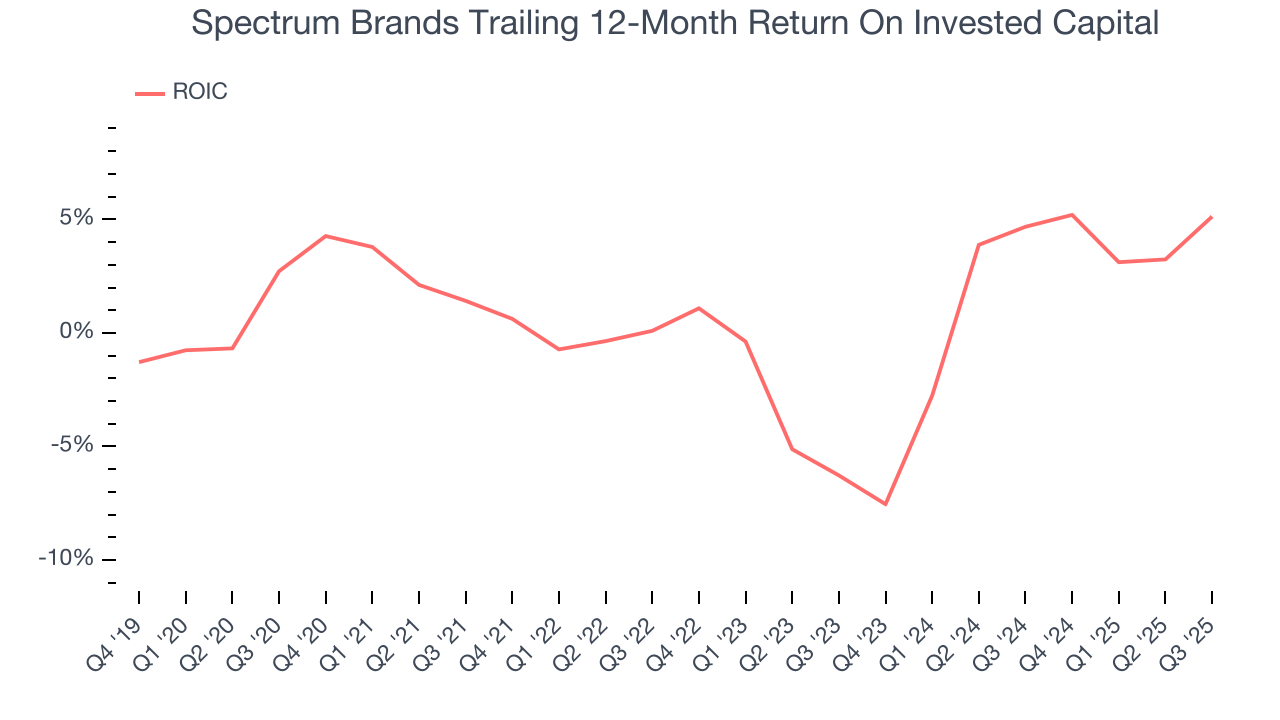
12. Balance Sheet Assessment
Spectrum Brands reported $123.6 million of cash and $654.2 million of debt on its balance sheet in the most recent quarter. As investors in high-quality companies, we primarily focus on two things: 1) that a company’s debt level isn’t too high and 2) that its interest payments are not excessively burdening the business.
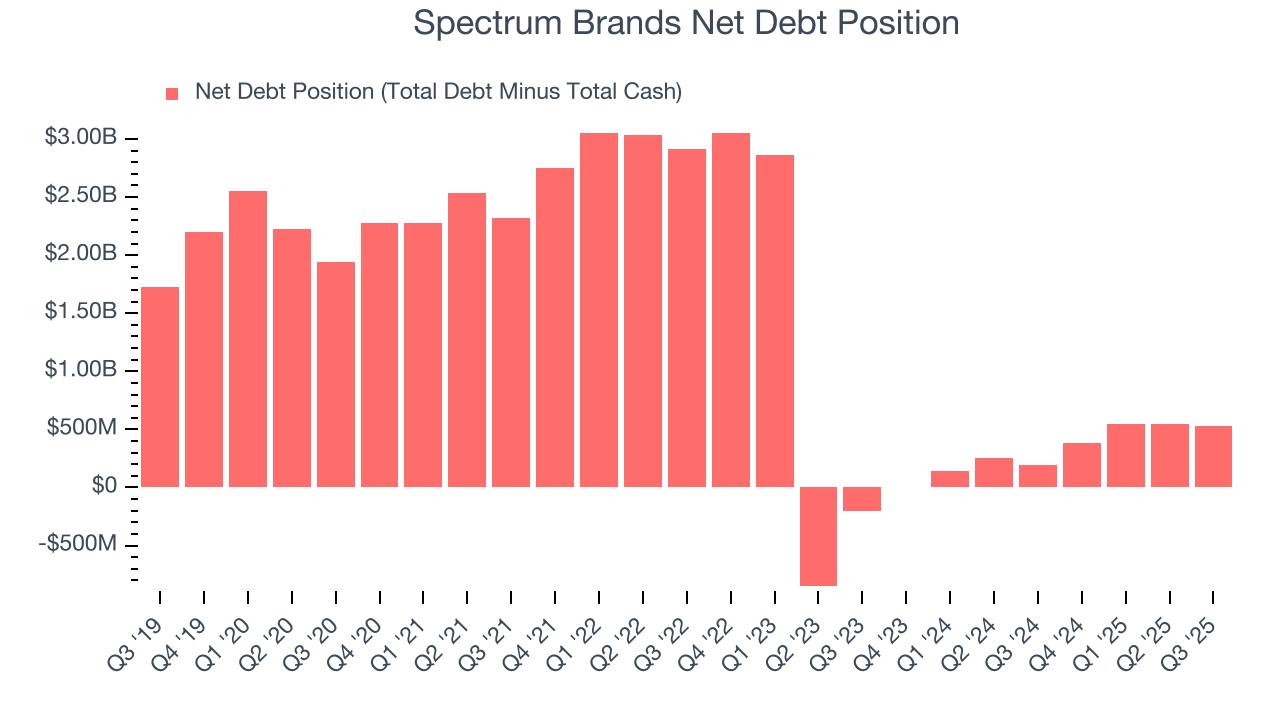
With $289.1 million of EBITDA over the last 12 months, we view Spectrum Brands’s 1.8× net-debt-to-EBITDA ratio as safe. We also see its $11.2 million of annual interest expenses as appropriate. The company’s profits give it plenty of breathing room, allowing it to continue investing in growth initiatives.
13. Key Takeaways from Spectrum Brands’s Q3 Results
It was good to see Spectrum Brands beat analysts’ EPS expectations this quarter. On the other hand, its gross margin missed and its organic revenue fell slightly short of Wall Street’s estimates. Overall, this quarter could have been better. The stock remained flat at $53.24 immediately after reporting.
14. Is Now The Time To Buy Spectrum Brands?
Updated: December 4, 2025 at 9:46 PM EST
The latest quarterly earnings matters, sure, but we actually think longer-term fundamentals and valuation matter more. Investors should consider all these pieces before deciding whether or not to invest in Spectrum Brands.
We see the value of companies helping consumers, but in the case of Spectrum Brands, we’re out. First off, its revenue has declined over the last three years. And while its EPS growth over the last three years has been fantastic, the downside is its projected EPS for the next year is lacking. On top of that, its relatively low ROIC suggests management has struggled to find compelling investment opportunities.
Spectrum Brands’s P/E ratio based on the next 12 months is 13.2x. This valuation is reasonable, but the company’s shaky fundamentals present too much downside risk. There are more exciting stocks to buy at the moment.
Wall Street analysts have a consensus one-year price target of $77.71 on the company (compared to the current share price of $56.94).
Although the price target is bullish, readers should exercise caution because analysts tend to be overly optimistic. The firms they work for, often big banks, have relationships with companies that extend into fundraising, M&A advisory, and other rewarding business lines. As a result, they typically hesitate to say bad things for fear they will lose out. We at StockStory do not suffer from such conflicts of interest, so we’ll always tell it like it is.






